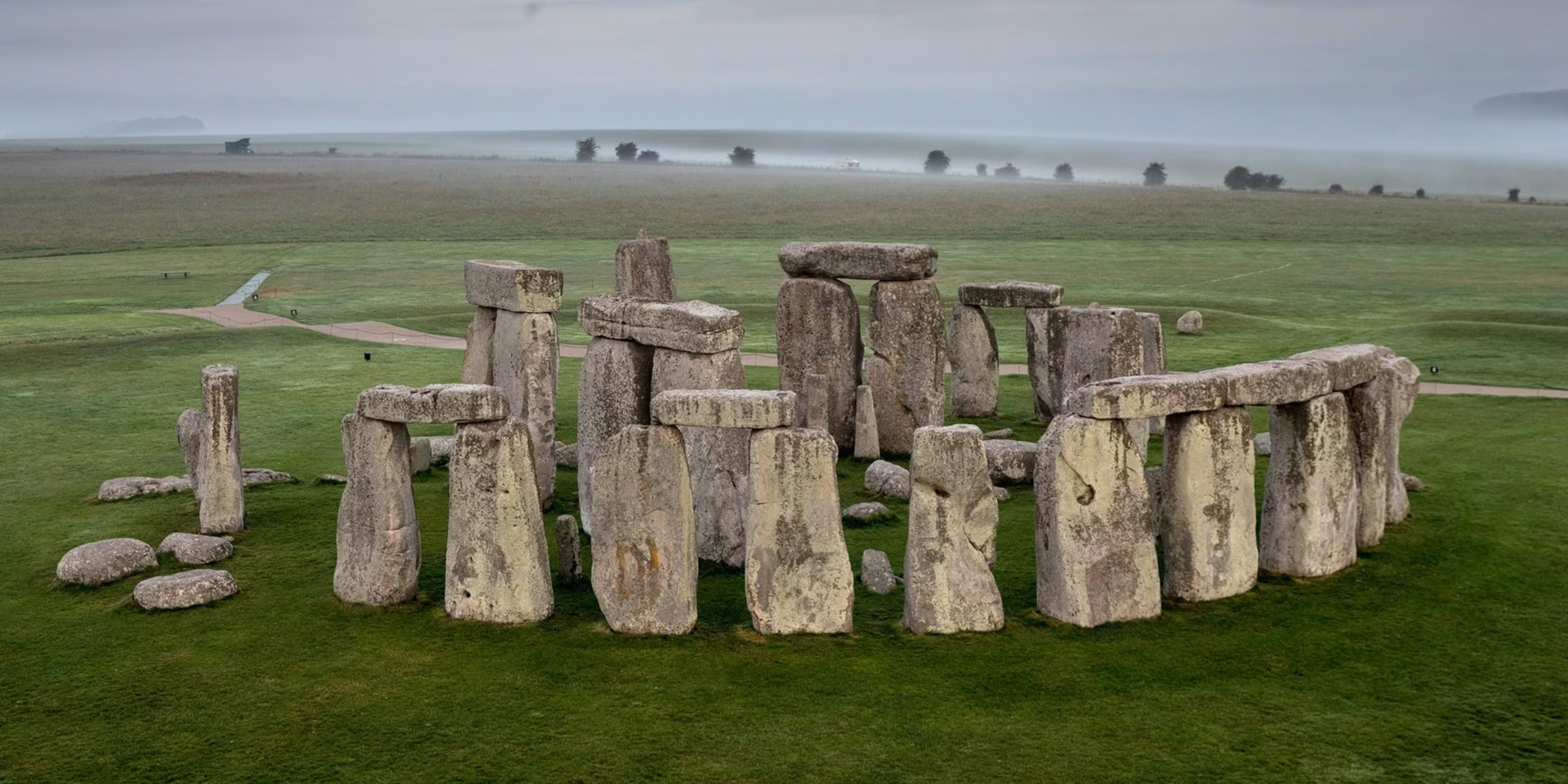Around 4,500 years ago, a massive stone structure aligned with the sun’s movements was built on England’s Salisbury Plain—by a civilization that had no metal tools, horses, or wheels. Even today, many mysteries remain about how and why Stonehenge was constructed.
But thanks to modern technology, researchers are uncovering new clues about these ancient puzzles. At the same time, the site—situated roughly 90 miles west of central London—faces growing threats from nearby development.
Back in 1922, National Geographic captured its first photo of Stonehenge: a black-and-white aerial shot made possible by the cutting-edge tech of the time—the airplane. For the past century, we’ve covered this prehistoric wonder, documenting new findings about its origins, construction, and purpose.
Our reporting continues to break new ground. The August 2022 issue of National Geographic put Stonehenge on the cover, featuring groundbreaking stories inside. Explorer and photographer Martin Edström used photogrammetry to create a detailed 3D model of the site. With a drone, his team snapped 7,000 images from every angle, stitching them together into a high-resolution digital replica. You can explore Stonehenge in augmented reality here.
The stones of Stonehenge weigh over 45 tons and rise as high as 24 feet. But what makes the monument truly remarkable isn’t just its size—it’s the ceremonial precision of its design. The first 1,600 feet of the avenue leading to Stonehenge aligns perfectly with the summer solstice sunrise and winter solstice sunset. Was this alignment meant for sun worship, tracking time, or something else? No one knows for sure.
Over the centuries, theories have linked Stonehenge to Druids, Romans, Vikings, Saxons, and even Merlin, King Arthur’s legendary sorcerer. But the people who actually built it left behind no written records—only bones, pottery fragments, stone tools, and antler picks.
A 12th-century legend by chronicler Geoffrey of Monmouth claims Stonehenge’s massive stones were taken from an Irish stone circle after a great battle, then magically transported by boat to their current location.
In a way, he wasn’t entirely wrong. National Geographic Explorer and archaeologist Mike Parker Pearson explains that while Britain has hundreds of stone circles, Stonehenge is unique—its stones, averaging two tons each, were hauled from far away.
Modern tools like x-ray fluorescence spectrometry and ICP-MS laser ablation helped geologists Richard Bevins and Rob Ixer trace the stones to four specific outcrops in Wales’ Preseli Hills. That means they traveled about 175 miles to reach Salisbury Plain.
Meanwhile, researcher Christophe Snoeck developed a way to extract isotopes from cremated remains, revealing where people buried at Stonehenge lived in their final years. His work showed that nearly half of the earliest burials came from distant regions—and even identified the type of wood used in their cremation, which didn’t grow near the site.
Experts believe constructing Stonehenge required vast amounts of timber—not just for wooden palisades, but also to drag 20-ton stones on sledges, build tracks, and erect towering scaffolds.
The Stonehenge landscape spans ten square miles, featuring processional avenues, settlements, around 350 burial sites, and possible healing centers. This ancient marvel stands in sharp contrast to its modern neighbor, the A303 highway—the route most of the site’s million yearly visitors take.
The narrow road is often clogged with traffic and potholes, and rumbling trucks disrupt the site’s tranquility. To fix this, officials proposed a two-mile, four-lane tunnel bypassing Stonehenge—but archaeologists and protesters pushed back. For now, the $2.2 billion project is paused after a ruling by Britain’s High Court last year.
How to Visit
Summer solstice is the peak time to see Stonehenge. At dawn, the sun rises behind the Heel Stone, casting its first light into the monument’s center. Excavations suggest a second stone may have once stood beside it, framing the sunrise. This is one of the rare times visitors can enter the inner circle.
Facing southwest during winter solstice, the sun would have originally set between the tallest trilithon’s uprights—though this effect was lost when part of the structure collapsed over the millennia.
Stonehenge is open all year, and advance timed tickets guarantee entry. A walkway encircles the stones, but to protect them, visitors usually can’t step inside. Still, there’s plenty to explore—the surrounding fields are dotted with ancient earthworks, burial mounds, and other monuments.
Getting There
Regular trains run from London, Bristol/Bath, and Southampton to Salisbury, 12 miles from Stonehenge. Buses (Salisbury Reds) also serve the area. From Salisbury, take a taxi or an accessible bus to the Stonehenge Visitor Centre. Then, it’s a 1.5-mile (25-minute) walk to the site—or a free shuttle from the disabled parking lot.
Where to Stay
Wiltshire offers plenty of hotels and guesthouses, and several campsites lie within 10 miles of Stonehenge.
